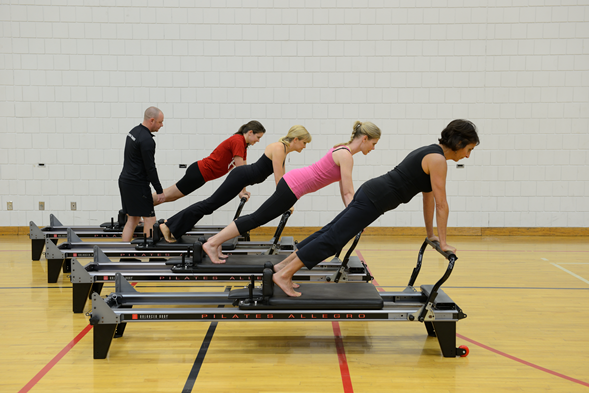What is Pilates?

Pilates is a mind-body exercise program that affects core stability, strength, flexibility, attention to muscle control, posture and breathing. Pilates workouts are customized, and can range from a gentle stretching session to a high-intensity challenge.
There are two primary types of Pilates—mat and reformer.
- With mat Pilates, the primary focus is on using your body for resistance.
- A Pilates reformer is a piece of equipment that uses springs, pulleys, bars, and straps to help keep joint impacts to a minimum.
In both mat and reformer Pilates exercises, you’ll work to strengthen your whole body through full range of motion.
Why try Pilates?
If you’re looking for a great way to strengthen and straighten out your entire body—Kirk highly recommends giving Pilates a try. Here’s why:
- Pilates offers benefits for everyone — regardless of age, gender or current fitness level. No matter your goals and challenges, Pilates can help to:
-
- Reduce the effect of joint problems. Because it’s a low-impact activity, Pilates addresses and reduces the effects of joint problems without causing stress on the joints themselves.
- Increase range of motion. Most Pilates exercises are adaptable to your range of motion.
- Improve core strength and stability. There is not a single Pilates exercise that does not have a core element to it.
- Build strength. Pilates can be a serious strength-building routine because of its central focus on the core.
- Relieve stress. Certain breathing techniques have a tremendous effect in relieving stress. One of the central focuses of Pilates is connecting breathing with body.
- Pilates is complementary to activities you’re probably already doing. No matter what your preferred mode of exercise—running, playing basketball, tennis, golf or others—Pilates provides benefits that will help you get better at your other activities, while limiting impact and reducing risk for injury.
- Pilates addresses muscle imbalances and combats the effects of sitting too much. Most of us spend good portion of the day sitting down, which leads to shortened hip flexors and hamstrings—which can lead to inhibited gluteus muscles, weak core musculature and poor posture. All of these contribute to low back pain—a common affliction of adults in the U.S. By stretching what needs to be released, strengthening the core, and getting your glutes to fire properly again, you can significantly reduce back pain.
Get started
If you’re ready to give Pilates a try, start at your local Y. Stop by member services to learn about package deals and pick up an informational brochure. The Y offers Mat Pilates classes, trainer-led Group Pilates Reformer classes, and Personal Training sessions focused on Pilates.